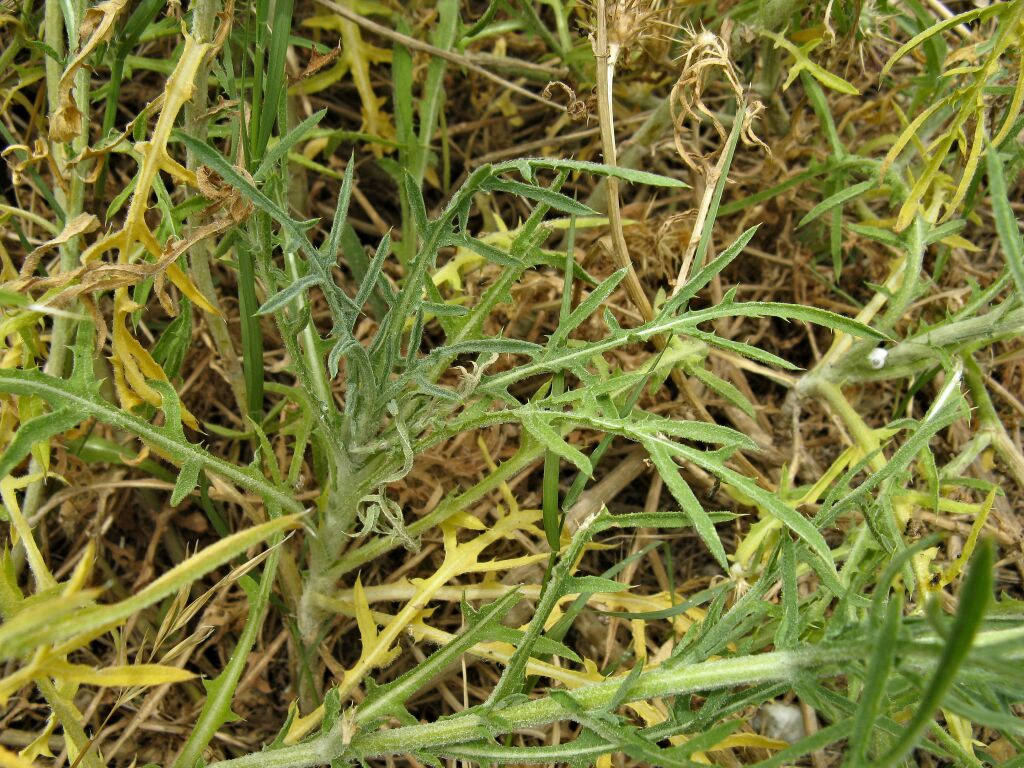Centaurea calcitrapa
L. Star ThistleDivaricately branched erect annual or biennial, to 1 m high. Basal leaves short-lived, petiolate, oblanceolate, to 20 cm long and 5 cm wide, deeply pinnatisect with toothed lobes, pubescent or woolly when young, glandular; cauline leaves sessile, scabrous, the lower ones lanceolate, 2–8 cm long, 1–3 cm wide, pinnatifid to lyrate, the upper ones linear to narrow-lanceolate, 2–4 mm wide, entire. Capitula solitary, ovoid-cylindric, 6–10 mm diam.; sterile capitulum produced at centre of basal leaves before flowering-stem develops; involucre 10–15 mm long; intermediate bracts ovate, glabrous, terminal appendage with a straight spine 10–30 mm long and 1–3 pairs of smaller spines; inner bracts shorter, terminal appendage broad, scarious. Corolla 15–20 mm long, pale purple, rarely pink or white. Cypselas 2–4 mm long, whitish, streaked or blotched brown, glabrous; pappus absent. Flowers mainly Nov.–Apr.
MuM, Wim, VVP, VRiv, MuF, GipP, WaP, Gold, CVU, NIS, EGU, HSF, HNF, Strz. Also naturalised WA, SA, Qld, NSW, ACT, Tas.,. Native to Europe, northern Africa and Asia. A widespread and troublesome weed, particularly in drier inland areas of Victoria where declared noxious.
Jeanes, J.A. (1999). Asteraceae. In: Walsh, N.G.; Entwisle, T.J., Flora of Victoria Vol. 4, Cornaceae to Asteraceae, pp. 652–666. Inkata Press, Melbourne.
 Spinning
Spinning




